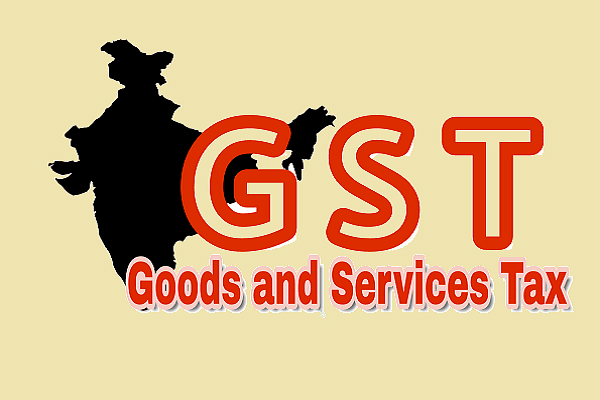Economy
Promise Of 14 Per Cent Annual Hike To States Was GST Deal’s Biggest Boo-Boo. Time To Correct It
- The era of open-ended promises to states must end in June 2022. There cannot be free lunches forever.

GST (<a href="https://commons.wikimedia.org/wiki/User:Tiven2240">Tiven Gonsalves</a>/Wikimedia Commons)
Thanks to the deep dive in tax revenues due to the Covid-19 lockdowns and growth collapse, the Goods and Services Tax Council meeting to be held later this month may see a lot of Centre-state tensions bubbling over. In itself, this is no calamity, but the remedies being offered by some of the opposition states – like Kerala, for example – are simply worse than the disease.
In a discussion on CNBC TV-18 last week, Kerala Finance Minister Thomas Isaac said he would oppose cuts in GST to revive the economy. When opposition parties talk about a demand stimulus and yet want to retain present tax rates, one wonders if their heads are screwed right.
The first goal of the GST, said Isaac, must be “revenue neutrality”. The question of tax rationalisation cannot happen before revenue neutrality is achieved.
This again is a load of bunkum, for the goal of GST was never “revenue neutrality”, even though that was the theoretical objective given to the babus, who drew up the rate structure before 1 July 2017.
The GST deal between Centre and state explicitly provides for a guaranteed 14 per cent annual increase in revenues to states, which implies revenue enhancement, not neutrality. This is the real bone of contention, especially now that the compensation cess is inadequate to fund large payouts to states during a pandemic-induced recession.
Isaac, however, thinks that the Centre should borrow more to pay him money for jam. His idea of a stimulus is self-serving, for the costs will be borne by the Centre and the taxpayer, while states enjoy a free lunch.
There are ways the Centre can call his bluff. No guarantee can be open-ended, and it should be possible even in a constitutionally-guaranteed revenue scheme to claim force majeure – unforeseeable and uncontrollable factors that impact one’s ability to keep promises.
States can take their battles to the Supreme Court, but they may not be able to force a decision that is exclusively to their benefit. Courts do not ignore acts of god or nature when deciding cases on breach of promise.
In any event, in order to make up for any shortfall, states have already been authorised to borrow more from the markets – upto 2 per cent of gross domestic product (GDP) – with the first 0.5 per cent coming without any riders on reforms.
If Thomas and other opposition-ruled states want more money they can well borrow more. These loans can be prepaid when the compensation finally comes after a revival. As things stand, states have not been compensated for revenue losses in March, April and May.
One way the Centre can help is by lowering the cost of state borrowings. This could be done either by way of interest rate subventions to states to cover the borrowing cost differential between Centre and state loans, or by the Centre itself lending money to states at rates marginally above the rates at which it borrows.
A 2 per cent subvention over Rs 2 lakh crore of state loans would not cost the Centre more than Rs 4,000 crore.
In the GST Council, though, the focus must be on how to revive economic activity and not merely cover short-term revenue issues. This is the wrong time to think of boosting revenues by raising taxes, at a time when businesses are struggling to keep their heads above water. Such self-defeating ideas can only come from the Left.
Over the longer term, once the compensation agreement ends in June 2022, payments to states suffering revenue losses should be linked to overall growth and inflation and state-level policy reforms that boost growth. Compensation cannot be fixed at an absolute level like 14 per cent annual increase when growth rates are unpredictable. Trying to hike the cess in order to generate more resources for compensation is also a bad idea, for it distorts the GST structure even further.
If states persist in demanding the moon, there is another way to call their bluff: the Union finance minister should tell them that whichever state wants to go back to the old system can do so. Few states will have the courage to do so as long as a majority of states prefer to stick to GST.
The remedies for a flawed GST are a simpler three-rate structure with fewer exemptions, an improved technology infrastructure, and better ways to ensure compliance and prevent tax fraud. These objectives can – and should – be achieved over the next 12 months. Compensation should also be tied to reforms by states.
The era of open-ended promises to states must end in June 2022. There cannot be free lunches forever.
Support Swarajya's 50 Ground Reports Project & Sponsor A Story
Every general election Swarajya does a 50 ground reports project.
Aimed only at serious readers and those who appreciate the nuances of political undercurrents, the project provides a sense of India's electoral landscape. As you know, these reports are produced after considerable investment of travel, time and effort on the ground.
This time too we've kicked off the project in style and have covered over 30 constituencies already. If you're someone who appreciates such work and have enjoyed our coverage please consider sponsoring a ground report for just Rs 2999 to Rs 19,999 - it goes a long way in helping us produce more quality reportage.
You can also back this project by becoming a subscriber for as little as Rs 999 - so do click on this links and choose a plan that suits you and back us.
Click below to contribute.
Latest